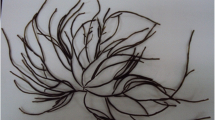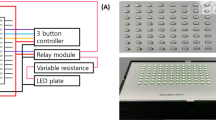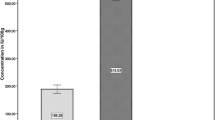Abstract
Free radicals and singlet oxygen are responsible for oxidative stress related diseases and many natural compounds are known to have antioxidant properties. In this study, extracts from brown and red seaweeds of Indian origin were evaluated for their ability to scavenge different radicals and quench singlet oxygen. The crude extract in methanol and its fractions in different solvents were evaluated for their activity. The methanol extract and its fractions from brown seaweed exhibited higher 2,2′-azinobis(3-ethylbenzothizoline-6-sulfonic acid) radical scavenging activity with more than 90% scavenging in butanol and ethyl acetate fractions and correlated with polyphenol content. There was a significant difference (p≤0.001) in hydroxyl radical scavenging activity between different fractions of the same seaweed. Among the crude extracts, extract from Gracilaria corticata showed the highest (14.0%) activity. Crude extract from brown seaweeds showed higher peroxyl radical scavenging activity compared to red seaweeds. In fractions from brown seaweed extracts, highest activity was observed in ethyl acetate fraction (>88%) followed by hexane fraction (>40 %). Ethyl acetate fraction from crude extract showed higher inhibitory activity against hemoglobin induced linoleic acid oxidation. Singlet oxygen quenching activity of the crude extract from brown seaweed was lower (<13%) compared to red seaweeds (16.4–20.5%).
Similar content being viewed by others
References
Aguilera J, Bischof K, Karsten U, Hanelt D (2002) Seasonal variation in ecophysiological patterns in macroalgae from an Arctic fjord. II. Pigment accumulation and biochemical defense system against high light stress. Marine Biol 140:1087–1095
Ahn CB, Jeon YJ, Kang DS, Shin TS, Jung BM (2004) Free radical scavenging activity of enzymatic extracts from a brown seaweed Scytosiphon lomentaria by electron spin resonance spectrometry. Food Res Int 37:253–258
Ames BN, Shigenaga MK, Hagen TM (1993) Oxidants, antioxidants and degenerative disease of aging. Proc National Academy of Science, USA 90:7915–7922
Anggadiredjal J, Andyani R, Hayati, Muawanah (1997) Antioxidant activity of Sargassum polycystum Phaeophyta and Laurencia obtuse Rhodophyta from Seribu Islands. J Appl Phycol 9:477–479
Baron CP, Berner S, Skibsted LH, Refsgaard HHF (2005) Evaluation of activity of selected antioxidants on proteins in solution and in emulsions. Free Rad Res 39:777–785
Cheeseman KH, Slater TF (1993) An introduction to free radical biochemistry. Br Med Bull 49:481–493
Darley-Usmer V, Halliwell B (1996) Blood radicals: relative nitrogen species relative oxygen species transition metal ions and the vascular system. Pharmacol Res 13:649–662
Duan XJ, Zhang WW, Li XM, Wang BG (2006) Evaluation of antioxidant property of extract and fractions obtained from red alga Polysiphonia urceolata. Food Chem 95:37–43
Dykens JA, Shick JM, Benoit C, Buettner GR, Winston GW (1992) Oxygen radical production in the sea anemone Anthopleura elegantissima and its endosymbiotic algae. J Exp Biol 168:219–241
Esterbauer H, Zollner H, Schaur RJ (1990) Aldehydes formed by lipid peroxidation: Mechanisms of formation, occurrence and determination In: Membrane Lipid Oxidation, Vigo-Pelfrey C (ed), CRC, Baco Raton, p 239–283
Foti M, Piattelli M, Amico V, Ruberto G (1994) Antioxidant activity of phenolic meroterpenoids from marine algae. J Photochem Photobiol 26:159–164
Frei B (1994) Natural antioxidants in human health and disease. Academic Press, San Diego
Heo SJ, Park EJ, Lee KW, Jeon YJ (2005) Antioxidant activities of enzymatic extracts from brown seaweeds. Bioresource Technol 96:1613–1623
Ito K, Hori K (1989) Seaweed: Chemical composition and potential food uses. Food Rev Int 5:101–144
Komrskova D, Lojek A, Hrbac J, Ciz MA (2006) Comparison of chemical systems for luminometric determination of antioxidant capacity towards individual reactive oxygen species. Luminescence 21:239–244
Kuda T, Tsunekawa M, Goto H, Araki Y (2005) Antioxidant properties of four edible algae harvested in the Noto peninsula Japan. J Food Comp Anal 18:625–633
Lim SN, Cheung PCK, Ooi VEC, Ang PO (2002) Evaluation of antioxidative activity of extracts from a brown seaweed Sargassum siliquastrum. J Agric Food Chem 50:3862–3896
Lopez-Alarcon C, Lissi E (2005) Interaction of pyrogallol red with peroxyl radicals: A basis for a simple methodology for the evaluation of antioxidant capabilities. Free Rad Res 39:729–736
Mamatha BS, Namitha KK, Senthil AM, Smitha J, Ravishankar GA (2007) Studies on use of Enteromorpha in snack food. Food Chem 101:1707–1713
Miyashita K (2006) Seaweed carotenoid fucoxanthin with highly bioactive and nutritional activities. J Mar Biosci Biotechnol 1: 48–58
Nahas R, Abatis D, Anagnostopoulou MA, Kefalas P (2007) Radical scavenging activity of Aegean sea marine algae. Food Chem 102:577–581
Piatt JF, Cheema AS, O`Brein PJ (1977) Peroxidase catalysed singlet oxygen formation from hydrogen peroxide. FEBS Lett 74:251–254
Pisani P, Bray F, Parkin DM (2002) Estimates of the world-wide prevalence of cancer for 25 sites in the adult population. Int J Cancer 97:71–81
Porter NA (1990) Autooxidation of polyunsaturated fatty acids: initiation propagation and product distribution basic chemistry. In: Membrane Lipid Oxidation, Vigo-Pelfrey C (ed), CRC, Press, Baco Raton, p 33–62
Roginsky V, Lissi EA (2005) Review of methods to determine chain-breaking antioxidant activity in food. Food Chem 92: 235–254
Sachindra NM, Sato E, Maeda H, Hosokawa M, Niwano Y, Kohno M, Miyashita K (2007) Radical scavenging and singlet oxygen quenching activity of marine carotenoid fucoxanthin and its metabolites. J Agric Food Chem 55:8516–8522
Senthil A, Mamatha BS, Mahadevaswamy M (2005) Effect of using seaweed Eucheuma powder on the quality of fish cutlet. Int J Food Sci Nutr 56:327–335
Shahidi F, Zhong Y (2007) Antioxidants from marine by-products In: Maximising the value of marine by-products. Shahidi F (ed), Woodhead Publ Ltd, Cambridge England, p 397–412
Stadler RH, Guillot FL (1997) The impact of nutrient additives and supplements on the shelf life and stability of foods and beverages In: Antioxidant methodology. Aruoma OI, Cuppett SL (eds), AOCS Press, Champaign, Illinois, p 101–118
Statsoft Inc (1999) STATISTICA for windows. Statsoft Inc 2300 East 14th Street, Tulsa OK
Yan X, Nagata T, Fan X (1998) Antioxidative activities in some seaweeds. Pl Food Hum Nutr 52:253–262
Yoshie Y, Wang W, Petilo D, Suzuki T (2000) Distribution of catechins in Japanese seaweeds. Fish Sci 66:998–1000
Yuan YV, Bone DE, Carrington MF (2005) Antioxidant activity of dulse Palmaria palmate extract evaluated in vitro. Food Chem 91:485–494
Yuan YV, Walsh NA (2006) Antioxidant and antiproliferative activities of extracts from variety of edible seaweeds. Food Chem Toxicol 44:1144–1150
Author information
Authors and Affiliations
Corresponding author
Rights and permissions
About this article
Cite this article
Sachindra, N.M., Airanthi, M.K.W.A., Hosokawa, M. et al. Radical scavenging and singlet oxygen quenching activity of extracts from Indian seaweeds. J Food Sci Technol 47, 94–99 (2010). https://doi.org/10.1007/s13197-010-0022-4
Received:
Accepted:
Published:
Issue Date:
DOI: https://doi.org/10.1007/s13197-010-0022-4




